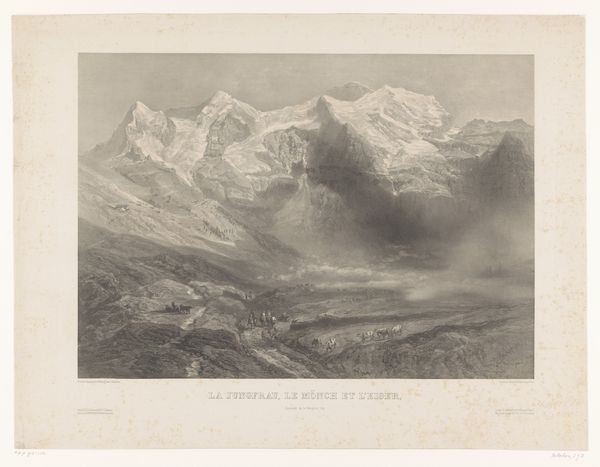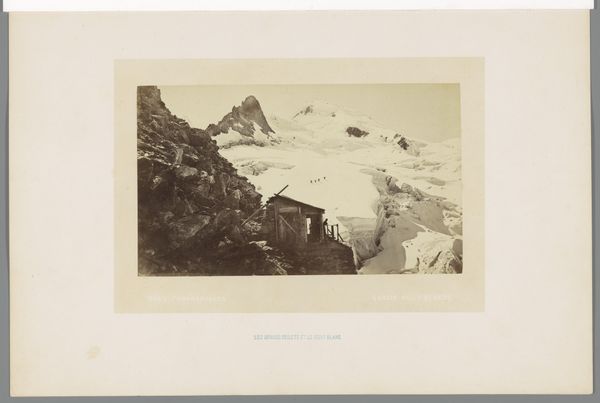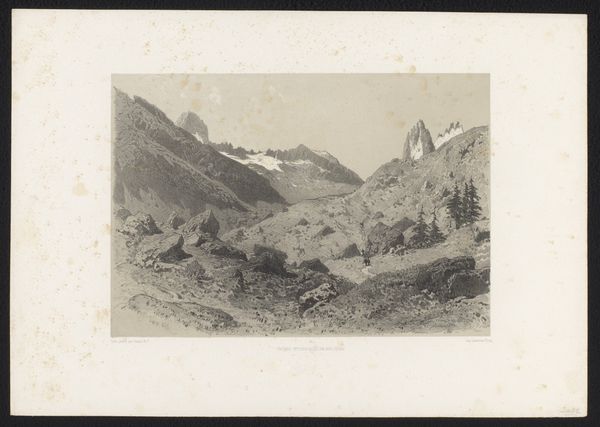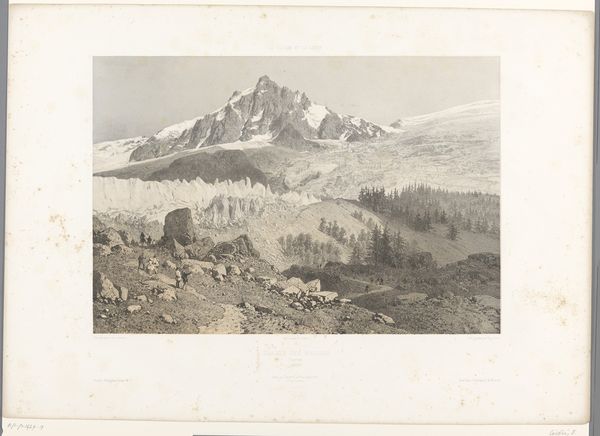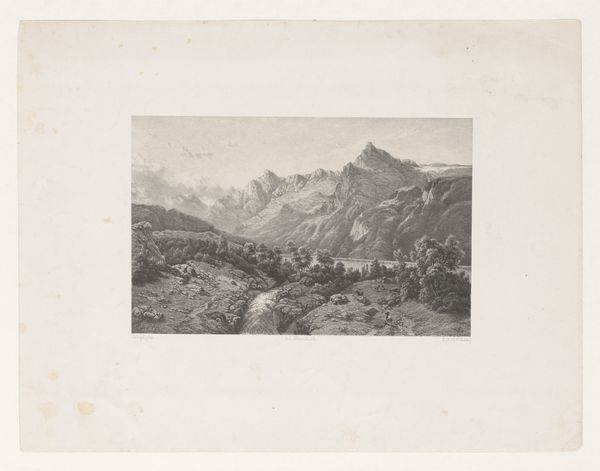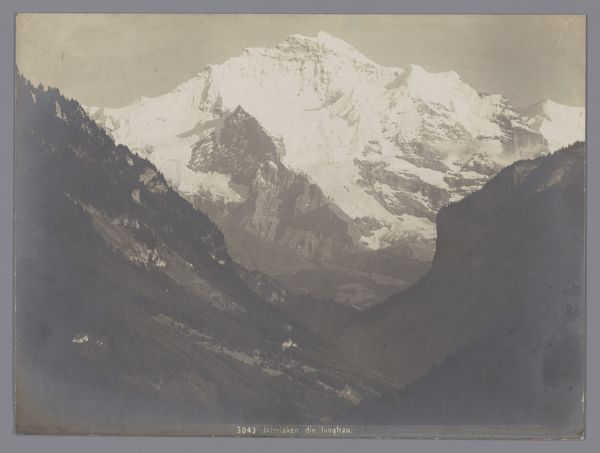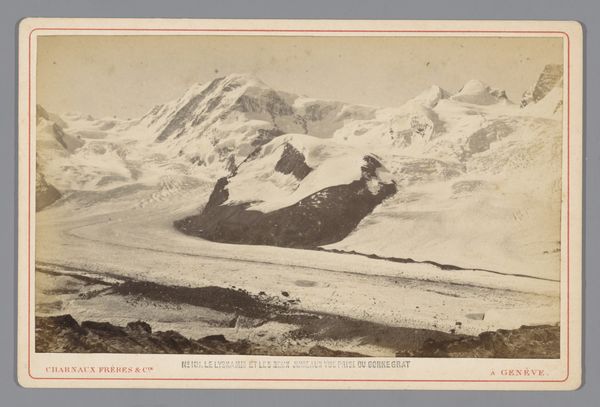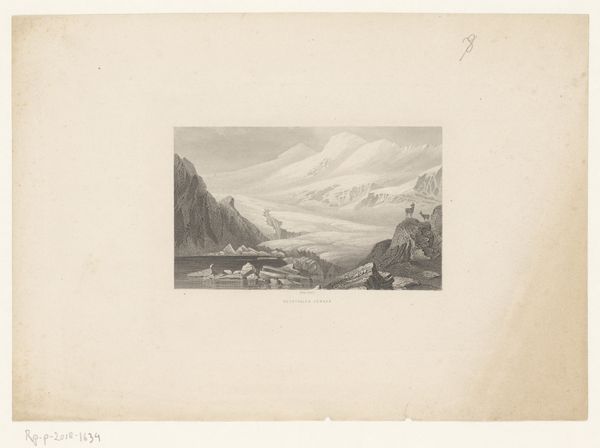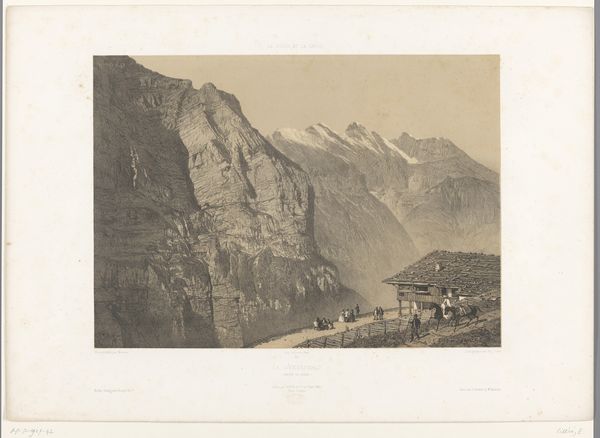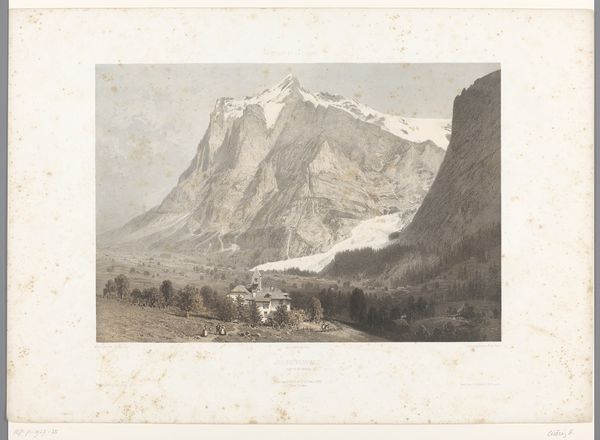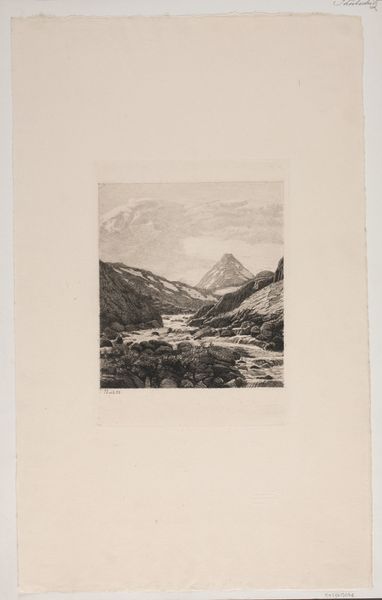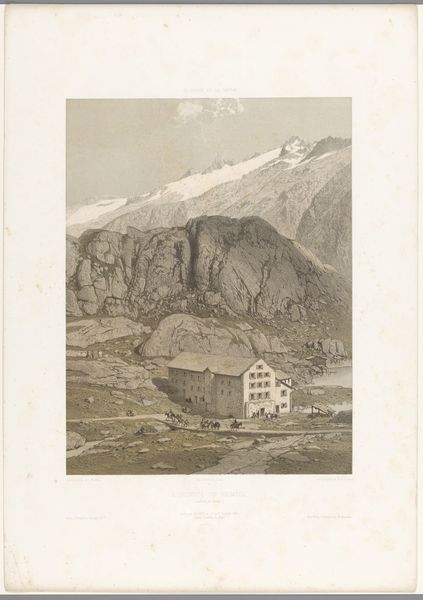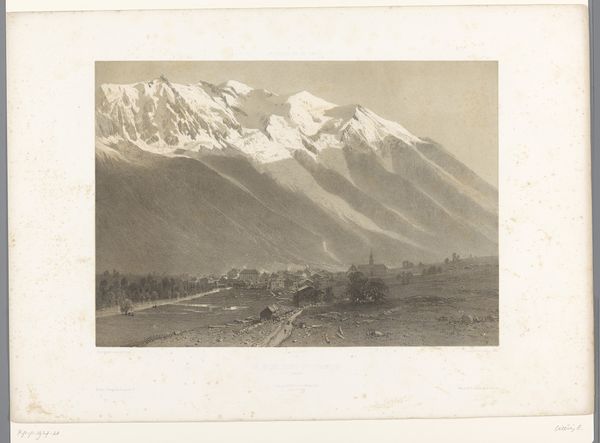
Dimensions: height 400 mm, width 567 mm
Copyright: Rijks Museum: Open Domain
Editor: Here we have Eugène Cicéri's "View of the Jungfrau from the Kleine Scheidegg," a gelatin silver print from 1859 currently held at the Rijksmuseum. It’s a fairly straightforward landscape, yet the muted tones create this rather ethereal, almost dreamlike quality. What stands out to you in this piece? Curator: What I find compelling is the historical context surrounding this photograph. Think about it – photography was still a relatively new medium in 1859. How was it being used, and what role did it play in shaping perceptions? Cicéri, through this image, isn't just documenting a landscape; he's actively participating in the romantic idealization of the Alps that was prevalent in the 19th century. This image caters to, and in a way reinforces, the cultural fascination with the sublime. Editor: So, you're suggesting this image isn't just a record, but a carefully constructed viewpoint to align with existing ideals? Curator: Precisely! Consider the figures positioned along the ridge; they invite the viewer into the scene, encouraging a sense of awe and connection to nature’s grandeur. This actively democratizes what used to be viewed as untouchable terrain by providing tourist infrastructure that encourages an industry of sight-seeing and collection of images like these. Editor: It’s interesting to think about this photograph as both an artwork and a sort of advertisement for tourism. Curator: And a vehicle for social commentary! It suggests how the experience of nature, even something as majestic as the Jungfrau, was being shaped and consumed within a specific social and cultural framework. This work speaks volumes about how we look, and what we are directed to see. Editor: That gives me a whole new appreciation for it! I came in thinking landscape, but I’m leaving thinking about the politics of landscape. Curator: Exactly! Art allows for exactly this possibility: to reshape, reconsider, and reposition existing understandings of ourselves in a world as it once was, as it is, and how it could become.
Comments
No comments
Be the first to comment and join the conversation on the ultimate creative platform.

